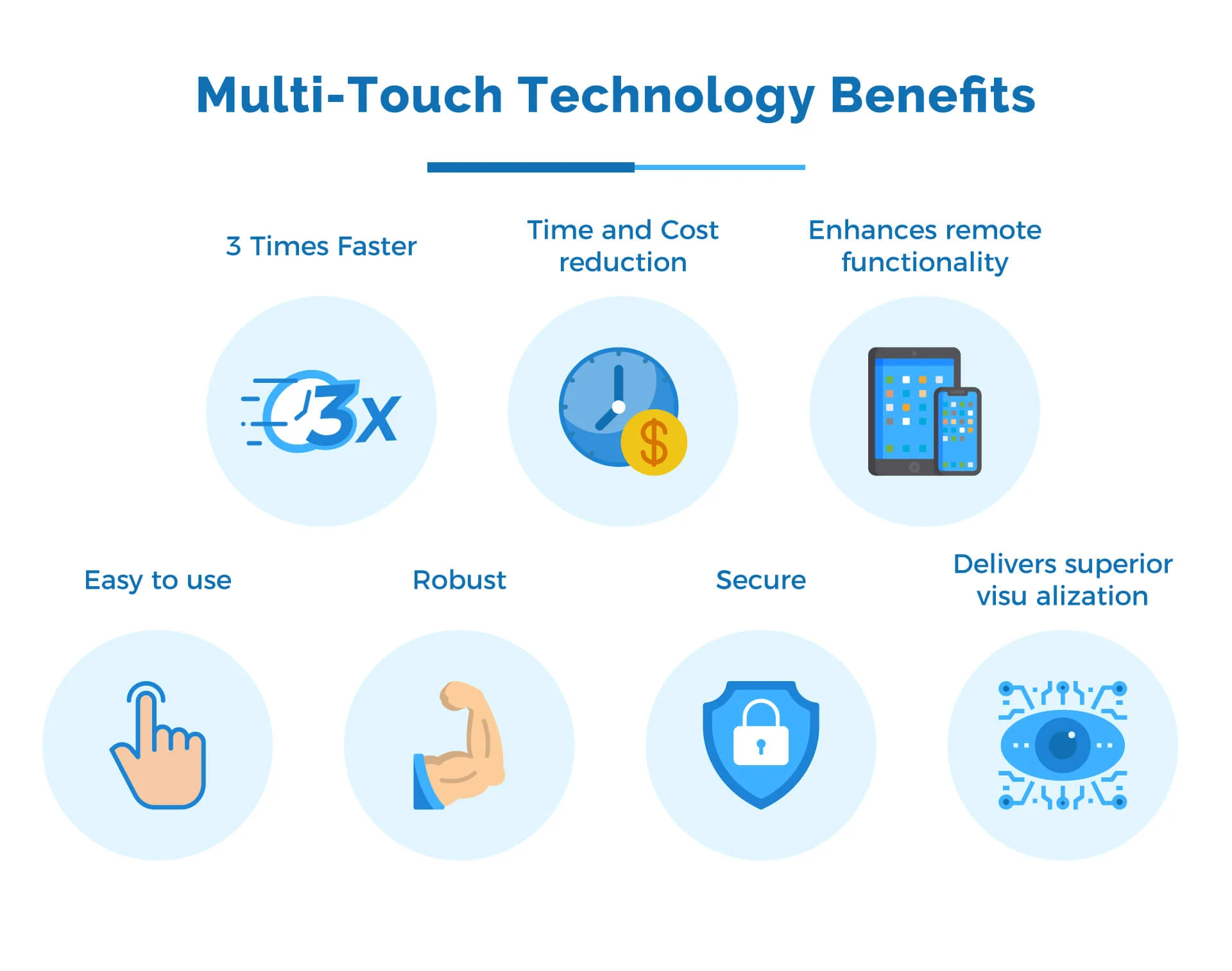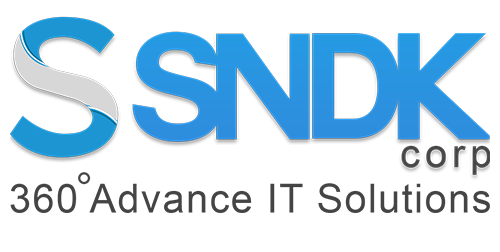Blog
Why multi-touch technology is the perfect fit for Industrial Automation?
Almost every manufacturing personnel is familiar with the multi-touch technology for industrial automation. We use it in our day-to-day lives. For instance, smartphones or tablets. Tasks like checking emails for work, accessing corporate data are done easily using phones instead of a computer system. This type of Human Machine Interface (HMI) is bringing industrial automation through the usage of multi-touch technology. On an industrial scale, the technology has many benefits to offer such as relatively low-cost hardware, the ability to access and work with data quickly and easily, and near-universal familiarity with the technology. And the usage of HMI systems with the technology offers unique advantages apart from the ones mentioned above.
How Multi-touch technology is different from a normal touchscreen?
It is quite common to get confused between multi-touch and single touch. Most people consider them to be same due to lack of proper information. But a traditional touchscreen application only uses single touches for accessing multiple screens. It basically replaces hardware like a keyboard and a pointing device such as a mouse. While, on the other hand, a multi-touch screen offers several added advantages over conventional touchscreens.
A multi-touch system can recognize the position of several touches and finger movements at the same time. These movements are generally referred to as gestures. Just like touchscreens, multi-touch technology helps the users operate the system without a keyboard or pointing device but it goes one step further by enabling intuitive gestures that facilitate the execution of commands. Some popular benefits of multi-touch technology are:

- It is three times faster than the normal touchscreen.
- Helps in reducing the training time and cost associated with it.
- Enhances remote functionality and access through smartphones and tablets.
- Easy to use as it has a similar operation as that of smartphones.
- A better option for hard and tough environments.
- Improves protection measures for humans and machine.
- Delivers superior visualisation which is the next step in HMI evolution.
Why Multi-touch technology is ideal for Industrial Automation?
1. Low Implementation Costs:
Consumer electronics is flooded with a lot of new technologies. Some of these technologies are easily adaptable while others aren’t. Some require a paradigm shift or heavy investment that simply outweighs the benefits of the new technology. But multi-touch for HMI is a technology that offers many real advantages without a need for significant investment or changing the existing work practices. For instance, the arrival of platforms like Windows 7 operating system with built-in multi-touch programming capabilities has simplified the usage of the technology through smartphones and tablets. It doesn’t require any expensive investment in hardware either.
2. Lowering Training Time and Costs:
Mature operators retire at greater rates and the younger ones come in a novice phase. They need to be trained well before they can replace experienced workers. Companies naturally want to reduce the training costs and time but they don’t know the right way to do it. Using multi-touch technology can prove to be beneficial as the majority of the younger workers will already have years of experience using smartphones and tablets and hence, they will be compatible with multi-touch gestures for HMI systems. The process is intuitive and can quickly be learned.
3. Inherently Suited for Industrial Conditions:
Devices making use of keyboards and mouse that are subjected to contamination from dust and water can’t match the multi-touch screen design. It has no moving parts and hence it is inherently a better fit. It eventually expands the life span of the equipment. Off-the-shelf devices can be used in the field without taking any additional protective measures. Besides, it is a less expensive alternate as compared to keyboards and pointing devices which cost a lot of money while saving them in hazardous areas such as Zone 1 or 2. Multi-touch HMI screens come with a protective overlay of glass or polycarbonate that safeguards them from splashes, dirt and even from extreme temperatures.
4. Automating the Safety Measures:
The multi-touch technology can be used to access HMI systems and can implement significantly enhanced safety features. Similarly, for protecting the workers and ensuring their safety, the HMI system screens can be programmed making users do certain gestures unique to a specific operation. For example, the process of starting or stopping the machine can be designed with a checkmark to be performed across the screen as a final step before the machine executes the command.
5. Automated Diagnosis of Possible Problems
The multi-touch technology can visualize machines and processes to access the right screen for the diagnosis of a problem. It is one of the most unique functionalities of this technology. The traditional HMI applications need multiple screen frames to solve the problem. More the number of frames more is the consumption of memory. But a multi-touch device requires only a few screen layers to show a complete system overview and hence consumes less of the storage space.
6. Infographic
It is safe to say we would not be able to enjoy many of our modern conveniences without automation. Thanks to advancements in robotic technology, many industrial processes have been made faster, safer and more efficient.
Although the use of automated equipment is ubiquitous now, it is important to remember that this was unheard of a “lifetime” ago. The first robots were used in industry in 1961, to unload parts in a die-casting facility. About 20 years later, Japanese manufacturers took advantage of new designs to introduce robotic production lines. Over the years, robots and artificial intelligence have advanced by leaps and bounds. Manufacturing and warehousing operations continue to find new ways in which they can improve and integrate their processes.
What is Multi Touch Technologies?
Most people are familiar with the general principle behind touchscreen technology: the interface works by determining the point of your touch, using this information to determine which icons or buttons the operator is pressing. But there are several different types of touchscreen technology, including multi-touch. Today, we’re going to take a closer look at multi-touch, revealing how it works and why it’s becoming such a popular choice among touchscreen manufacturers.
Multi-touch is essentially a type of technology that allows a device to recognize and process multiple touches simultaneously. Most touchscreen devices are only capable of recognizing a single touch. So if you attempt to place your fingers on two different areas of the device at the same time, it will only register the location touched by your first finger and not your second. Multi-touch technology is designed to eliminate this problem by supporting the use of multiple, simultaneous touches.
So, what benefits (if any) does multi-touch technology offer? Being able to identify multiple points of contact opens the doors to a while new world of applications and possibilities. Devices that support multi-touch technology, for instance, can be implement functionality like pinch-to-zoom, the activation of subroutines which are attached to gestures, additional controls and much more. Of course, this is really just the tip of the iceberg when it comes to the benefits of using multi-touch technology.
Typically, the multi-touch technology works in conjunction with an ASIC sensor that is fixed on the device’s surface. The sensor identifies the point or points of touch, relaying this information to the device’s on-board computer system.
There are also multi-touch gestures, which as the name suggests, support the use of predefined motions to interact with the respective device. You can find a variety of laptops, smartphones and tablet computers with multi-touch gestures.
You can find multi-touch technology being used in a wide range of different smartphones, tablets and other touchscreen-enabled devices, including both the iPhone and iPad. Apple, Inc. actually holds several patents related to the implementation of multi-touch technology. The tech giant event attempted to trademark the word “Multi-touch,” although this request was rejected by the Patent and Trademark Office, citing the reason of it being too generic.
Final Words
As the multi-touch technology for HMI has many advantages to offer including improved performance, faster and more accurate command execution, and enhanced safety, the technology will become more dominant in the industrial world. The usage of multi-touch technology simplifies the industrial processes and saves a lot of time while automating them.

